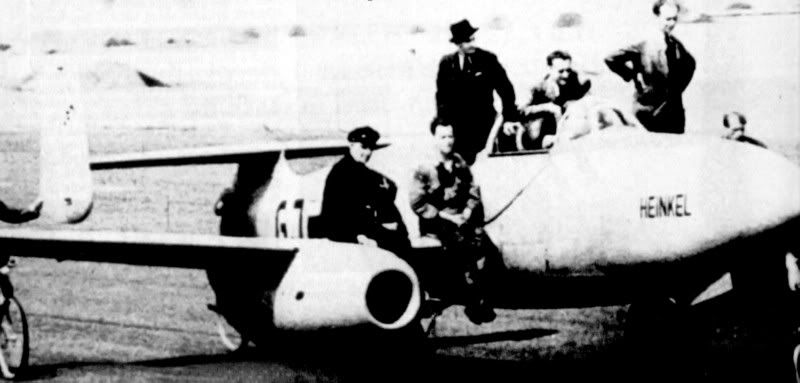The He-280 was a private venture by Heinkel himself after making the first single jet engine powered He-178. The plane’s maiden flight was on April 5th, 1941. The plane had a nose wheel instead of a conventional tail wheel because of airlift problems of the wings. The rest is from a source.
Unfortunately for The Reich, engine reliability issues, a lack of armament provision, issues with the fuel type and structural defects in the tail design all kept the system grounded, with ultimate favor being ported over to the Messerschmitt Me 262 - the aircraft that would become Germany's first jet-powered fighter. Developed as early as 1939, the He 280 saw first flight as soon as 1941 with the initial of what was to become nine total prototypes being flow. The aircraft was actually flown without engine covers on either of the two centrifugal-flow HeS 8 engines due to a critical situation with fuel gathering in the engine cowlings during flight.The He 280 was a single-seat, twin-engine, turbojet-powered aircraft capable of speeds in excess of 550 miles per hour. Looking very much like the Me 262 that it would replace, the He 280 series mounted the twin HeS 8 turbojets under each low-mounted monoplane wing system. The tail system offered up a unique twin-fin/twin-rudder design in the tail section. The pilot sat just forward of the main wing roots with good visibility forward, above and to the sides. Standard armament was to become an array of 6 x MG 151 20mm cannons though only three such weapons ever armed one system. A powered-tricycle landing gear was one of the other notable design achievements.
A total of nine prototype examples would ever be fielded, each with varying powerplants as needed. The He 280 V1 became the first aircraft ever to feature a bail-out by ejection seat as the controls had frozen on the pilot, forcing his evacuation. The He 280 V4 saw the system fitted with 6 x pulsejets whilst the He 280 V5 and He 280 V6 would be the first aircraft in the series fitted with the 3 x 20mm cannon armament. The He 280 V7 prototype model would later become a glider for high-speed aerodynamic research and the He 280 V8 would be designed with a “V” type tail unit instead of the twin fin “T” setup.
Had the problems of the He-280 been resolved the Germans would of had a maneuverable dog fighter compared to the Me-262.




